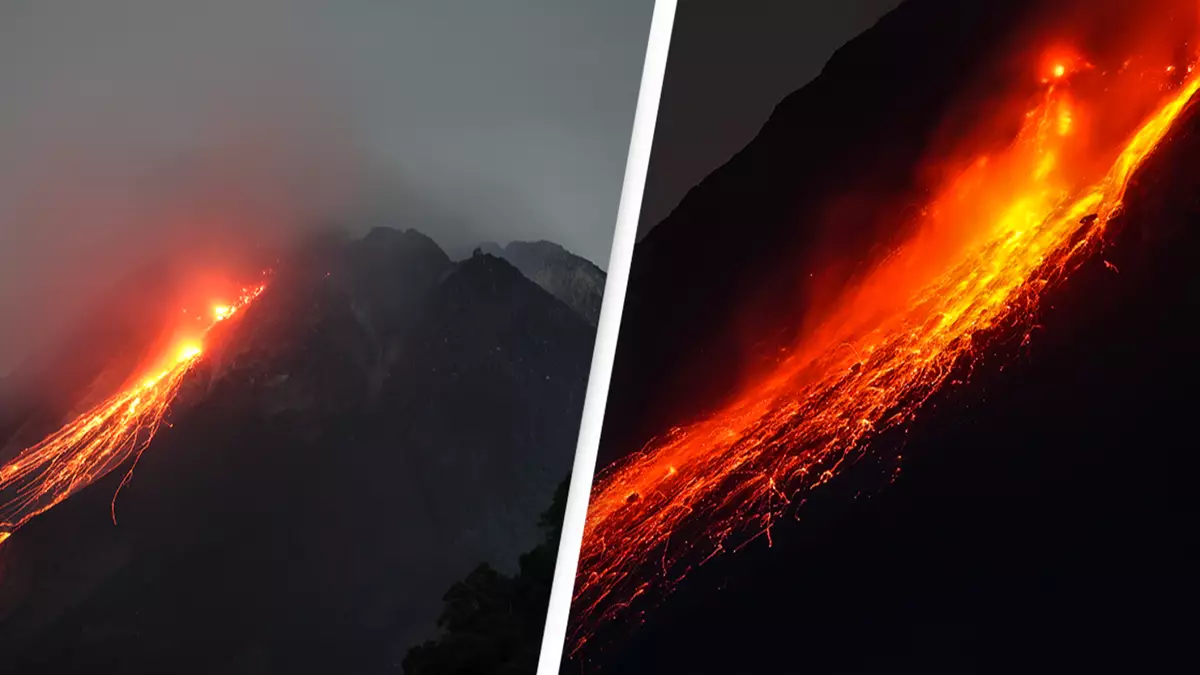Featured image credit: Garry Lotulung/NurPhoto via Getty Images
Scientists have shared their thoughts on a massive supervolcano in the United States that has seen increased activity.
Located in eastern California, Long Valley Volcano is one of 20 supervolcanoes in the world.
Unlike superheroes saving the world, “supervolcanoes” are actually focused on destruction, as the term refers to volcanoes that have, at one point, erupted more than 240 cubic miles of matter.
The Long Valley caldera stretches for miles. (George Rose/Getty Images)
Long Valley was formed about 760,000 years ago during a “super-eruption,” when hot ash was deposited to become what is called a caldera.
Rather than the mountain-shaped volcanoes we typically imagine, calderas are characterized by sprawling depressions. The Long Valley Caldera is 20 miles long, 11 miles wide, and approximately 3,000 feet deep. So it’s no surprise that it can cause damage if it erupts.
Fortunately, the volcano did not trigger another super-eruption at the level that formed it, but scientists became concerned in recent decades after Long Valley saw an increase in seismic activity in the 1980s .
Researchers have noticed streams and hot springs that seem to come to life in the Long Valley caldera, which could indicate that something might be about to blow beneath the surface.
Discussing the impacts of a potential eruption, Michael Poland, a geophysicist at the U.S. Geological Survey, told NBC News that when it comes to supervolcanoes, “the first thing people think is that it There’s going to be an eruption that ends civilization.”
Although an eruption at Long Valley would not wipe out entire civilization from the planet, an eruption of more than 240 cubic miles of material would be enough to cover all 163,696 square miles of California.
The business has seen a resurgence in recent decades. (George Rose/Getty Images)
However, while Poland acknowledges that “powerful explosions can impact” volcanoes like Long Valley, “the vast majority are smaller eruptions with less explosive lava flows.”
In 2017, scientist Rob Nelson discussed what he described as “alarming signs of possible volcanic activity” in Long Valley.
“There are signs of an imminent eruption scattered throughout this valley – the site of the second largest explosive volcanic eruption in North America,” he said at the time.
Fortunately, these signs have not yet resulted in an eruption, and in 2023, researcher Ettore Biondi and his team conducted research to try to understand the activity at Long Valley.
An eruption could have huge impacts. (Getty Image Bank)
Using fiber optic cables to collect acoustic sensing data, researchers discovered that a solid rock structure appears to cover the Long Valley magma chamber.
Although an eruption still cannot be completely ruled out, the researchers noted that the structure could prevent large eruptions from occurring.
According to NBC News, Biondi said: “That doesn’t imply that you can’t have smaller eruptions, but from a supervolcanic eruptions perspective, I think as of now we’re on the safe side.”
Topics: Science, American News








